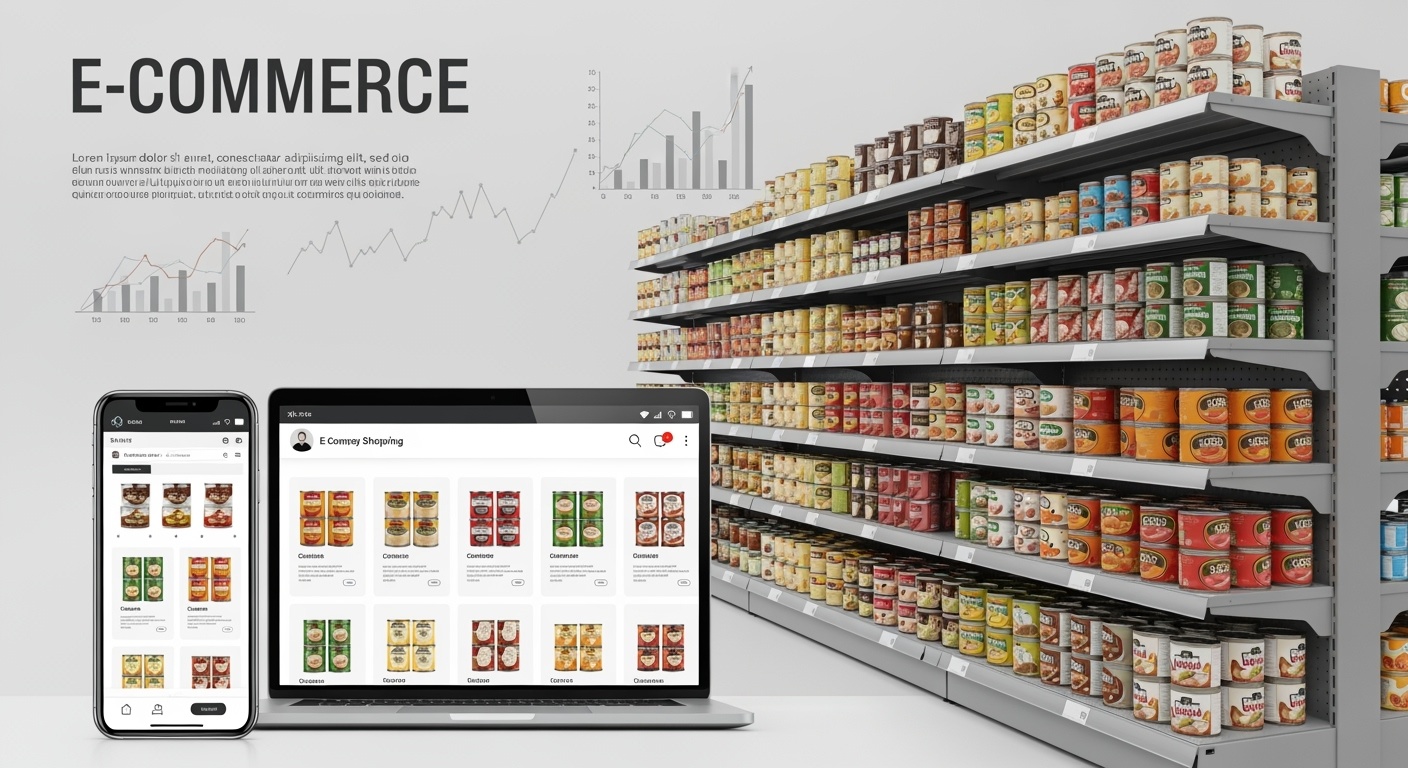Malaysia's Air Conditioner Ecommerce Market: Strategic Insights for Q1 2025
Revenue Scaler Team
Content Team

Malaysia's Air Conditioner Ecommerce Market: Strategic Insights for Q1 2025
The Malaysian air conditioner ecommerce market presents compelling opportunities for revenue growth, with Q1 2025 data revealing an $8.4 million market in Shopee and Lazada dominated by Chinese brands and characterized by fierce platform competition. Understanding these market dynamics is crucial for businesses looking to capture market share in Southeast Asia's rapidly growing cooling solutions sector.
Market Size and Growth Trajectory
Malaysia's online air conditioner market reached $8.4 million in Q1 2025, demonstrating the country's growing digital commerce adoption in the home appliances sector. This figure represents significant purchasing power concentrated in a relatively small market, suggesting high consumer willingness to invest in quality cooling solutions through digital channels.
The market's concentration around premium and mid-tier price points indicates Malaysian consumers prioritize quality and brand reputation over pure cost savings. This presents opportunities for brands willing to invest in building trust and demonstrating value propositions that justify higher price points in the competitive landscape.
Brand Landscape: Chinese Dominance with Japanese Resilience
The market hierarchy reveals fascinating insights into consumer preferences and brand positioning strategies. Hisense leads with $3.16 million in gross merchandise value (GMV), capturing 37% of the total market - a commanding position that reflects successful localization and aggressive pricing strategies.
Midea follows as the second-largest player with $1.74 million (21% market share), while Daikin represents the strongest Japanese presence with $827,000 (10% market share). This top-three configuration illustrates the battle between Chinese value-engineering excellence and Japanese quality reputation.
Panasonic, being a globally recognized brand, holds 5.5% market share with $465,000 in GMV. This positioning suggests opportunities for established brands to better leverage their heritage and quality reputation through improved digital marketing and channel partnerships.
The long tail of other brands, including Sharp ($485,000), Haier ($430,000), and TCL ($332,000), demonstrates market fragmentation that creates opportunities for focused niche strategies or aggressive consolidation plays.
Platform Dynamics: Shopee's Overwhelming Dominance
Shopee controls Malaysia's air conditioner ecommerce market with commanding authority, generating $7.3 million (86%) of total GMV across 95 active merchants. In contrast, Lazada hosts 127 active merchants but captures only $1.17 million (14%) in GMV, highlighting the stark difference in platform performance.
This market concentration reveals critical insights for brands planning their entry strategy. Shopee's platform dominance indicates where consumer attention and purchasing power are concentrated, making it the natural choice for maximum market exposure. However, Lazada's lower competition intensity presents opportunities for brands to establish market positioning with less saturation, albeit with significantly reduced overall reach.
The key to understanding Shopee's dominance lies in merchant performance distribution rather than merchant quantity. Despite having fewer total merchants than Lazada, Shopee's sellers consistently achieve higher revenue thresholds:
- High-performing merchants (>$10,000)Shopee leads with 42 merchants versus Lazada's 16
- Mid-tier merchants (>$1,000)Shopee dominates with 67 merchants compared to Lazada's 46
This performance differential explains why Shopee generates 86% of total GMV with fewer merchants—their platform cultivates significantly more successful sellers, particularly at higher revenue levels. The data suggests that Shopee's ecosystem better converts merchant activity into meaningful sales results.
Merchant Excellence: Lessons from Top Performers
The merchant landscape reveals distinct success patterns worth analyzing. The White Goods leads all merchants with $2.18 million in GMV, demonstrating how specialized appliance retailers can build significant digital presence through focused product expertise and customer service excellence.
M HOME AIRCON SPECIALIST ($776,000) and SH HOME APPLIANCES ($570,000) represent successful specialist strategies, focusing exclusively on cooling solutions rather than general appliance retail. Their success suggests customers value specialized knowledge and service capabilities when making significant appliance purchases.
EKS EXPREZ's dual-platform presence (Shopee: $516,000, Lazada: $426,000) provides a case study in effective multi-platform strategy, generating nearly $1 million in combined GMV through platform diversification while maintaining consistent brand messaging and service quality.
Consumer Behavior Insights and Market Implications
The data reveals several important consumer behavior trends shaping purchase decisions. The concentration of sales among specialized merchants suggests Malaysian consumers research extensively before purchasing air conditioners, preferring retailers with demonstrated expertise over general marketplaces.
Review patterns among top merchants show strong correlation between customer satisfaction and GMV performance. The White Goods' 3,250 reviews alongside their market leadership indicates the importance of social proof and customer feedback management in building sustainable competitive advantages.
Platform choice appears influenced by trust and specialization rather than pure price competition. Shopee's dominance despite hosting fewer merchants suggests their platform provides superior customer experience, potentially through better logistics, customer service, or merchant verification processes.
Price Positioning Analysis: Segmentation by Origin
Malaysia's air conditioner ecommerce market reveals distinct pricing tiers that closely correlate with brand origin, creating a four-tier hierarchy that reflects consumer perceptions of quality, reliability, and brand heritage.
Korean Brands Lead Ultra-Premium Segment ($642.31 average) Korean manufacturers command the highest average selling prices at $642.31, representing a 161% premium over the market average. This ultra-premium positioning reflects consumer willingness to pay for perceived technological innovation and build quality. However, this strategy comes with significant volume limitations, as evidenced by minimal unit sales from Korean brand-specific merchants.
Malaysian Brands Capture Local Premium ($380.97 average) Acson's success at $380.97 average pricing demonstrates the power of local market understanding and service advantages. This 55% premium over market average reflects consumer appreciation for local support networks, faster service response, and cultural alignment. The strategy proves particularly effective in a market where after-sales service concerns are paramount for major appliance purchases.
Japanese Brands Maintain Established Premium ($303.85 average) Japanese manufacturers successfully maintain premium pricing at $303.85 average, commanding a 24% premium over market average while achieving substantial volume through 906 units sold via official channels. This positioning reflects decades of brand building around quality and reliability. Notably, pricing varies significantly within Japanese brands, with Daikin commanding ultra-premium prices ($690-928) while Panasonic dealers operate in the $298-608 range, suggesting different positioning strategies within the Japanese cohort.
Chinese Brands Execute Value Leadership ($232.32 average) Chinese manufacturers have established clear value leadership at $232.32 average pricing, positioning 6% below market average while capturing the highest volumes through official stores (2,462 units). This pricing strategy reflects a deliberate focus on accessibility and market penetration rather than margin optimization. The consistency across Chinese brands ($192-245 range) indicates coordinated market positioning that prioritizes volume and market share growth.
Strategic Implications of Price Positioning The pricing hierarchy reveals several critical market dynamics. First, brand origin continues to significantly influence pricing power in Malaysia, with traditional quality perceptions from Japan and innovation perceptions from Korea still commanding premiums. Second, Chinese brands have successfully established a new value benchmark that forces all competitors to justify price premiums through clear differentiation. Third, local brands can achieve premium positioning through service advantages and market proximity, suggesting opportunities for other regional players.
The 2.8x price differential between Korean and Chinese brands indicates substantial market segmentation tolerance, creating opportunities for brands to position strategically within these established tiers rather than attempting to disrupt them entirely.
Future Market Outlook and Emerging Opportunities
The $8.4 million market size suggests significant growth potential as Malaysian ecommerce adoption continues expanding. Climate change concerns and rising temperatures will likely drive increased air conditioner demand, particularly in urban areas where ecommerce adoption is highest.
Chinese brand dominance creates opportunities for differentiation through service excellence, extended warranties, or specialized installation services. Japanese and Korean brands can leverage quality positioning if they improve digital marketing and local partnership strategies.
The merchant landscape's specialization trend indicates opportunities for new specialized retailers or service-focused business models that combine product sales with installation, maintenance, and customer education services.
Malaysia's air conditioner ecommerce market rewards specialization, platform focus, and customer service excellence over pure price competition. Success requires understanding local consumer preferences, building platform-specific strategies, and creating value propositions that justify premium positioning in an increasingly competitive landscape.
This analysis is based on Magpie Intelligence Q1 2025 market data for Shopee and Lazada sales and provides strategic guidance for businesses considering market entry or expansion in Malaysia's growing air conditioner ecommerce sector.
Looking to grow your Malaysia e-commerce sales? Reach out to RevenueScaler for expert consultation on maximizing your marketplace potential and scaling revenue growth.
Similar Insights
Explore more insights related to Market Intelligence

Indonesia Beauty E-Commerce Insight — July 2025 Market Data
Indonesia’s beauty category generated US $152.2 million GMV across major e-commerce platforms in July 2025 , up 17.8% month-on-month. Total quantity sold reached 53.1 million units (+34.4%), while 436.9 thousand SKUs recorded at least one sale (+15.9%), showing a healthy and expanding product turnover across platforms.

Lazada Dominates Philippines Canned Food Ecommerce Market - April 2025 Insight
The Philippines canned food ecommerce market demonstrated robust performance in April 2025, with total gross merchandise value (GMV) reaching ₱80.8 million across major digital platforms. This comprehensive analysis reveals significant market dynamics, platform preferences, and brand positioning in the rapidly evolving Filipino digital commerce landscape.

Indonesia's E-commerce Coffee Market in February 2025: Kapal Api Maintains Dominance Amid Market Consolidation
Indonesia's e-commerce coffee market showed signs of consolidation in February 2025, with total sales reaching IDR 74.64 billion across major digital platforms. The market landscape reveals continued dominance by established players while highlighting platform-specific competitive dynamics and evolving consumer preferences.